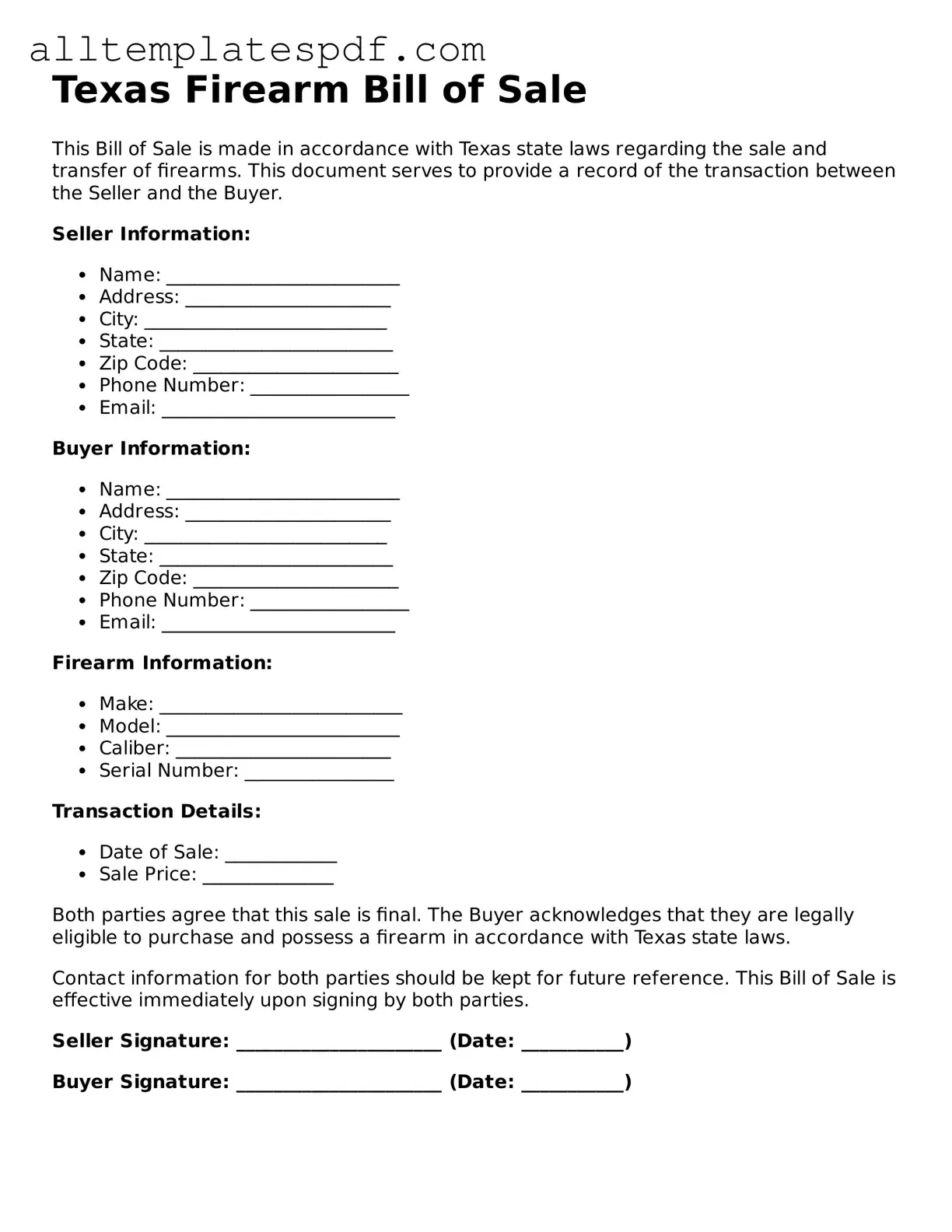When filling out the Texas Firearm Bill of Sale form, many individuals make common mistakes that can lead to complications down the line. Understanding these pitfalls can help ensure that the transaction is smooth and legally sound. Below are eight frequent errors to watch out for.
One of the most common mistakes is failing to include all required information. The form typically requires details such as the buyer's and seller's names, addresses, and driver's license numbers. Omitting any of this information can render the document incomplete, which might cause issues if questions arise about the sale later.
Another frequent error is not providing accurate firearm details. The description of the firearm should include the make, model, caliber, and serial number. Inaccurate or vague descriptions can lead to confusion and may even complicate future ownership claims.
People often overlook the importance of signatures. Both the buyer and seller must sign the form for it to be valid. If either party neglects to sign, the document may not hold up in legal situations, potentially leading to disputes about ownership.
Additionally, many individuals fail to keep a copy of the completed form. It’s crucial for both parties to retain a copy for their records. This documentation can serve as proof of the transaction and protect both parties in case of any future legal issues.
Another mistake is not verifying the buyer's eligibility. In Texas, certain individuals, such as felons or those with restraining orders, may not legally purchase firearms. Sellers should take the time to ensure that the buyer is eligible, as failing to do so could result in serious legal consequences.
Some people also make the mistake of not completing the form in a timely manner. It’s best to fill out the Bill of Sale at the time of the transaction. Delaying this process can lead to forgotten details or miscommunication between the buyer and seller.
Another common error is using outdated forms. Laws and regulations can change, so it’s important to ensure that the form being used is the most current version. Using an outdated form may not comply with current legal requirements, which could invalidate the transaction.
Finally, individuals sometimes overlook the importance of witnesses. While not always required, having a witness present during the transaction can add an extra layer of security and credibility to the sale. This can be especially helpful in case any disputes arise in the future.
By being aware of these common mistakes, individuals can navigate the Texas Firearm Bill of Sale process more effectively. Taking the time to fill out the form correctly can prevent unnecessary complications and ensure that the transaction is legally sound.
